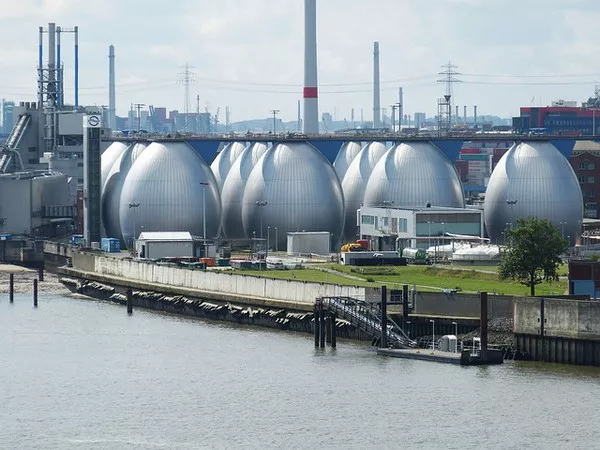As urban populations continue to rise and industrial activities expand, the effective treatment and disinfection of wastewater have become paramount to prevent environmental contamination and safeguard public health. Wastewater contains a diverse range of contaminants, including pathogens, chemicals, and other pollutants, necessitating a multi-step approach to ensure its safe discharge or reuse. Disinfection, a crucial stage in wastewater treatment, involves the elimination of harmful microorganisms and pathogens that can pose a significant threat to human health and ecosystems. This article delves into the various methods and technologies used to disinfect wastewater, highlighting their benefits, limitations, and advancements.
Conventional Disinfection Methods
Historically, conventional disinfection methods like chlorination and ultraviolet (UV) irradiation have been extensively employed for wastewater treatment due to their relatively straightforward implementation and efficacy. Chlorination involves the addition of chlorine or its compounds, such as chlorine gas or sodium hypochlorite, to wastewater. The disinfection process relies on the oxidative properties of chlorine, which destroy bacteria and viruses. While chlorine-based methods are effective, they can form harmful disinfection byproducts (DBPs) when reacting with organic matter in water. These byproducts, such as trihalomethanes, are of concern due to their potential adverse health effects.
UV irradiation, on the other hand, utilizes short-wavelength ultraviolet light to disrupt the DNA of microorganisms, rendering them incapable of reproduction. UV disinfection is free from chemical byproduct formation and does not introduce additional chemicals into the treated water. However, its effectiveness is contingent upon the intensity and duration of UV exposure. Moreover, UV treatment may not effectively address certain hardy microorganisms and spores.
Advanced Disinfection Technologies
To overcome the limitations of conventional methods and address emerging contaminants, advanced disinfection technologies have gained prominence in recent years. Some notable methods include:
1. Ozonation:
Ozone (O3) is a powerful oxidizing agent that effectively disinfects wastewater by breaking down organic and inorganic compounds. It is particularly efficient in destroying a wide range of pathogens, including viruses and bacteria. Ozonation also reduces the formation of DBPs compared to chlorination. The process leaves no residual ozone in the treated water, ensuring its safety for discharge or reuse. Ozonation, however, requires careful control and monitoring due to its potential reactivity and high energy consumption.
2. Advanced Oxidation Processes (AOPs):
AOPs encompass a group of techniques that generate highly reactive hydroxyl radicals to degrade pollutants in wastewater. AOPs combine various oxidative agents, such as ozone, hydrogen peroxide, and UV light, to create a potent disinfection synergy. These processes are effective not only against microorganisms but also against persistent organic pollutants, pharmaceuticals, and personal care products that may be present in wastewater. The complexity of AOPs, coupled with their energy and resource demands, makes them suitable for targeted applications.
3. Membrane Filtration:
Membrane-based disinfection involves using microfiltration, ultrafiltration, nanofiltration, or reverse osmosis membranes to physically remove pathogens and contaminants from water. These membranes have pore sizes that prevent the passage of microorganisms while allowing water molecules to flow through. Membrane filtration is highly efficient and does not rely on chemical dosing. However, regular maintenance is crucial to prevent fouling and ensure consistent performance.
4. Electrochemical Disinfection:
Electrochemical processes utilize the potential difference between electrodes to generate reactive species that deactivate microorganisms. Electrochemical disinfection is environmentally friendly, does not produce harmful byproducts, and offers the advantage of real-time monitoring and control. It can also treat water with high levels of salinity and organic matter. However, its practical application depends on factors such as electrode material and system design.
Emerging Trends and Future Prospects
As research and innovation continue to advance in the field of wastewater disinfection, several emerging trends and future prospects are worth noting:
1. Nanotechnology:
Nanomaterials show promise for enhancing disinfection processes. Nanoscale materials can be used as catalysts in AOPs, improving the efficiency of pollutant degradation. They can also be embedded in membranes to enhance pathogen removal and antimicrobial activity.
2. Photocatalysis:
Photocatalytic processes, often involving titanium dioxide (TiO2), utilize light energy to activate catalysts that break down pollutants. This technology is effective for both disinfection and degradation of organic compounds, making it a versatile approach for wastewater treatment.
3. Green Disinfection Approaches:
The shift towards sustainability has prompted the exploration of greener disinfection alternatives, such as using plant-based extracts, natural sunlight, and biofiltration. These methods aim to minimize the environmental footprint of wastewater treatment.
4. Integration of Multiple Technologies:
Hybrid approaches that combine different disinfection methods hold potential for increased efficiency and broader contaminant removal. Integrating UV treatment with AOPs, for instance, can enhance overall disinfection performance and address a wider range of contaminants.
Conclusion
Wastewater disinfection is a critical step in ensuring the safe release or reuse of treated water, mitigating the risks associated with microbial contaminants and pollutants. While conventional methods like chlorination and UV irradiation have been effective, advanced technologies offer improved disinfection performance and broader contaminant removal capabilities. From ozonation to advanced oxidation processes, membrane filtration to electrochemical disinfection, the arsenal of techniques available continues to expand, driven by the need for more efficient and sustainable wastewater treatment solutions. As researchers and engineers push the boundaries of innovation, the future of wastewater disinfection holds the promise of safer water resources and a healthier environment for generations to come.

